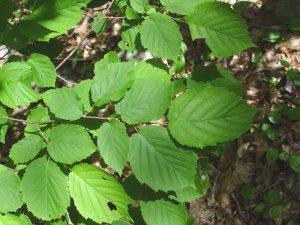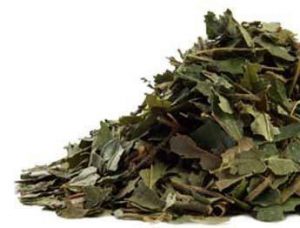I am so happy to share all these memories from childhood and I am grateful that others find them interesting as well as entertaining. Best of all are the folks who are reminded of their own memories.
Lets go for another drive.
As we know, money was always in short supply throughout Appalachia and that still holds true today. Historically, most folks had “regular” jobs along with owning small farms. These small farms didn’t pay the bills, but nevertheless helped make ends meet. A few head of cattle to market or an allotment of tobacco sold went a long way to help feed and cloth the children through the school year. Other income crops were also raised…a plot of beans or a patch of strawberries come to mind. Anything that you could raise and sell.
 Another way to earn some extra cash was from collecting wild herbs and medicinals, which we called “pulling leaves.” My grandmother always pulled leaves. To the uninitiated, this would be witch hazel or bead wood leaves. These were boiled down and made into witch hazel oil somewhere further down the line. But that wasn’t our affair. We just harvested them.
Another way to earn some extra cash was from collecting wild herbs and medicinals, which we called “pulling leaves.” My grandmother always pulled leaves. To the uninitiated, this would be witch hazel or bead wood leaves. These were boiled down and made into witch hazel oil somewhere further down the line. But that wasn’t our affair. We just harvested them.
The witch hazel is a low growing tree or shrub with smooth bark and roundish serrated leaves. They grow best on the north side of the mountain in moist soil. They grow close together in fairly dense thickets with intertwining branches.
Pulling leaves is not an easy task. We had feed sacks with straps sewn around the opening so they could be tied around your waist, freeing both hands to work. You did not pick the leaves, but grasped individual branches and stripped them a handful at a time. To protect your fingers from blisters my grandmother tied narrow strips of cloth around individual fingers for a snug fit, but allowing for the dexterity needed to accomplish the task. Although this took place in the shade of the early summer forest, it was hot sweaty work. The green leaves had a wonderful aroma but a sack soon became quite heavy and you had to pack them very tightly to make the most of your time.
Once your sacks were full, it was time for a nice long hike to the empty barn loft where the leaves were spread to dry. With its metal roof and full southern exposure the leaves baked as if in an oven.
 I’m only guessing, but the leaves lost between 80-90% of their weight while drying. To my knowledge, the buyers did not accept green leaves. This prevented mold and mildew while in storage. Four or five sacks could now be combined into one with a delightful crunchy sound. Then off to the store.
I’m only guessing, but the leaves lost between 80-90% of their weight while drying. To my knowledge, the buyers did not accept green leaves. This prevented mold and mildew while in storage. Four or five sacks could now be combined into one with a delightful crunchy sound. Then off to the store.
Sometimes if we had several sacks to sell, my mother would drive us the long way around to the store. Other times, we would hike across the mountain a distance of about a mile to “Dew Millers “store.
Dew’s store was on a dirt road adjacent to the Blue Ridge Parkway on what is now Sheets Gap Road. This was a real, old fashioned country store. Dew dealt in all manner of herbs like ginseng and may-apple and various other barks and roots. He also sold a few canned goods, as well an drinks and snacks. I remember two or three bulbs suspended from hanging wire for lights, and old chest style Coca Cola cooler, filled with chilled drinks in glass bottles. There were also large loose candy jars arranged nearby on a broad wooden counter.
Dew would weigh our leaves and if memory serves, pay about .25 cents per pound. Being very young, my brother, sister and I were happy with .50 or .75 cents we would earn. We always bought a drink and some candy with our new found wealth. My grandmother would make as much as 5 or 6 dollars for her efforts. For all that hard work, it was a poor wage but pure profit. We were probably more of a hindrance to her than an asset, but what great memories we have of pulling leaves.


